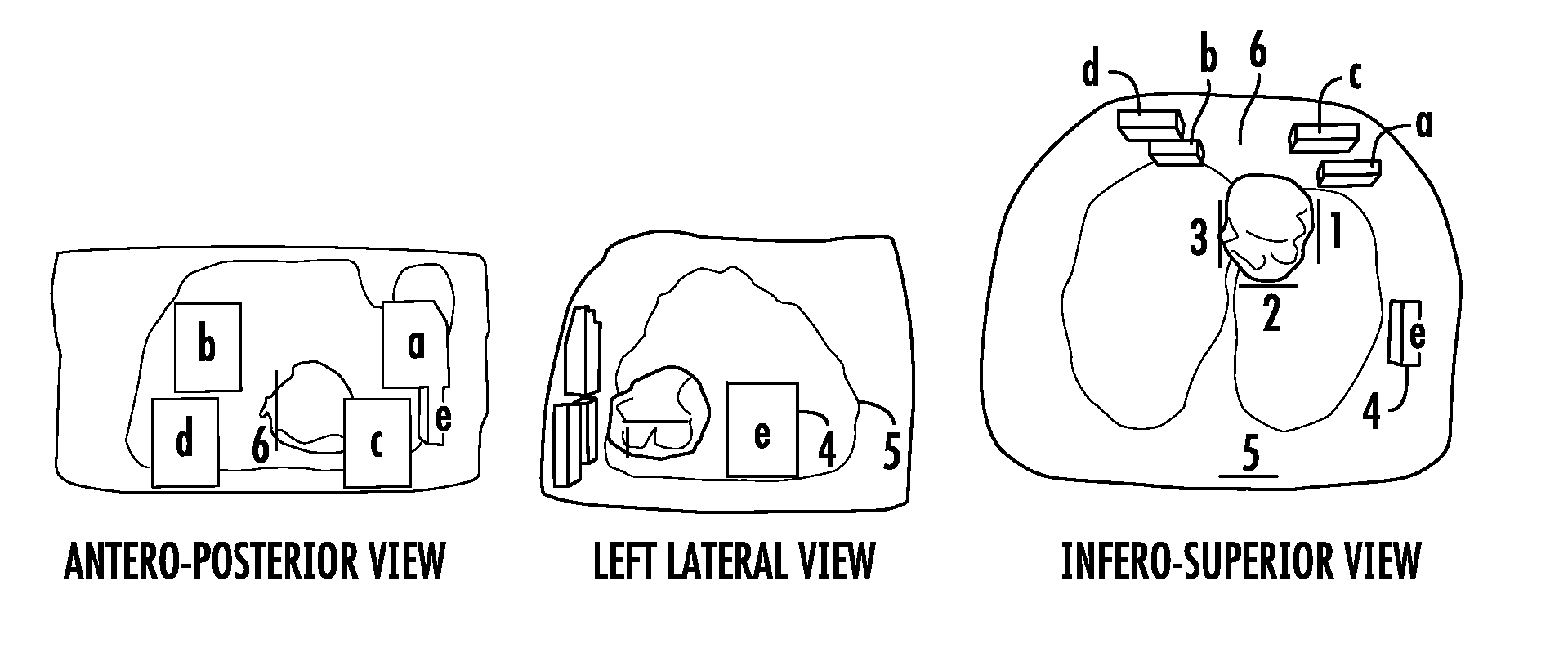Method for computationally predicting optimal placement sites for internal defibrillators in pediatric and congenital heart defect patients
a technology of congenital heart defect and optimal placement site, which is applied in the field of computational model for determining the placement of cardiac cardioverter/defibrillator devices, can solve the problems of pain and psychological trauma, no reliable, personalized prediction method, and use of non-standard icd configurations, and achieve low defibrillation. the effect of removing breathing motion errors
- Summary
- Abstract
- Description
- Claims
- Application Information
AI Technical Summary
Benefits of technology
Problems solved by technology
Method used
Image
Examples
example
[0030]An exemplary implementation of the present invention is described herein, in order to further illustrate the present invention. The exemplary implementation is included merely as an example and is not meant to be considered limiting, Any implementation of the present invention on any suitable subject known to or conceivable by one of skill in the art could also be used, and is considered within the scope of this application.
[0031]A clinical MRI (1.5 T) dataset acquired from a 14-year-old male pediatric patient with tricuspid valve atresia is used throughout this example. Because of the tricuspid valve atresia, the right ventricle (RV) was not recognizable on the clinical low-resolution MRI images. This dataset included axial torso scans, and short-axis (SA) and long-axis (LA) cardiac cine scans. The axial image (27 slices, 384×300 pixels each) had a resolution of 1×1×6 mm3, and the SA cine scans (11 slices, 144×192 pixels each) had a resolution of 2×2×10 mm3, a...
PUM
 Login to View More
Login to View More Abstract
Description
Claims
Application Information
 Login to View More
Login to View More - R&D
- Intellectual Property
- Life Sciences
- Materials
- Tech Scout
- Unparalleled Data Quality
- Higher Quality Content
- 60% Fewer Hallucinations
Browse by: Latest US Patents, China's latest patents, Technical Efficacy Thesaurus, Application Domain, Technology Topic, Popular Technical Reports.
© 2025 PatSnap. All rights reserved.Legal|Privacy policy|Modern Slavery Act Transparency Statement|Sitemap|About US| Contact US: help@patsnap.com



